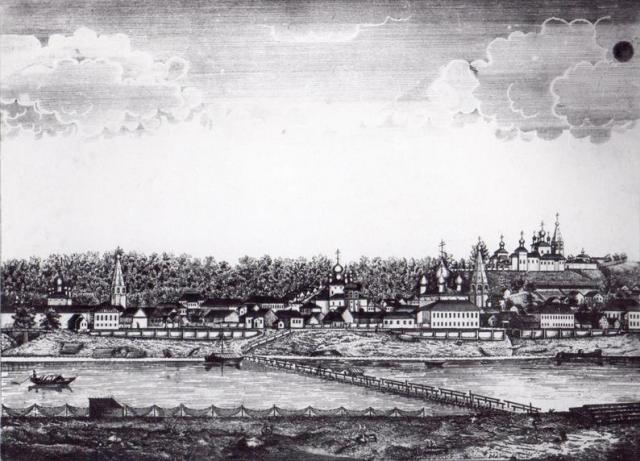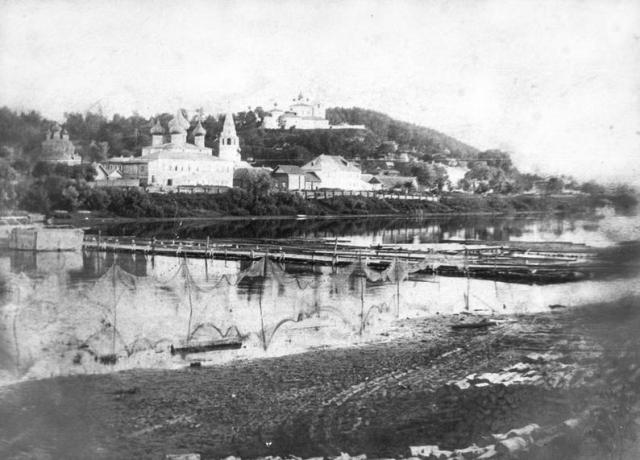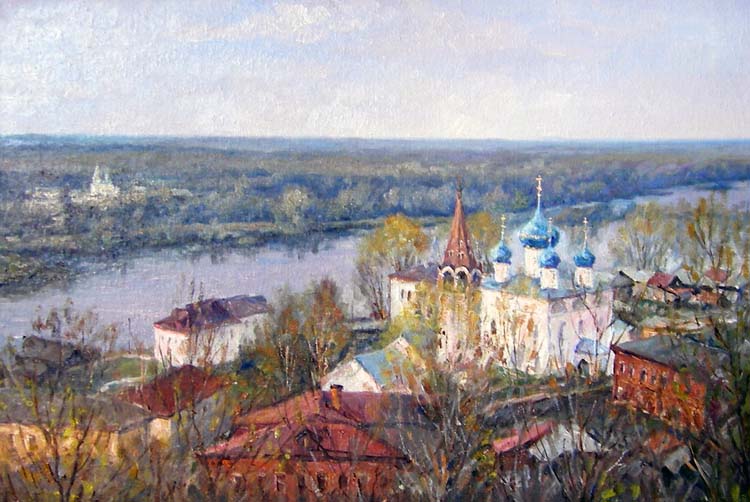History of Gorokhovets
11th and 12th Centuries
Foundation
Gorokhovets is believed to have been founded in 1168 on the orders of Grand Prince Andrey Bogolyubsky to serve as a fortified outpost on the eastern border of his principality of Vladimir-Suzdal. During the 11th century Slavic tribes settled in the area which was previously inhabited by the Finnic-Ugric Merya tribe. The centre of this settlement was its wooden fortress, which was built in the 12th century on earthen mounds on Nikolskaya Hill.
13th to 15th Centuries
In 1239 Gorokhovets was first mentioned in chronicles as it was razed to the ground by the Mongol-Tatars during their invasion of Rus. It took the city several centuries to recover from this devastating blow. By the 15th century Gorokhovets, which was previously part of the Suzdal-Nizhny Novgorod Grand Principality, had been incorporated into the Moscow Grand Principality.
16th Century
Puzhalova Hill
In 1539 Gorokhovets was besieged by Kazan Tatars and according to legend during the siege the image of a knight armed with a sword appeared behind a hill in the rays of the setting sun. The Tatars were so scared by the vision that they gave up their siege and retreated. In commemoration of this miraculous salvation, the hill became known as Puzhalova Hill, after the old Russian word for 'to frighten' - 'puzhat' ('pugat' in modern-Russian). In 1563 Tsar Ivan the Terrible gave Gorokhovets to his father-in-law Prince Mikhail Temryukovich as a reward for his role in the Siege of Polotsk of the same year.
17th Century
Building Work

The 17th century saw a great deal of construction work performed in the city, especially religious buildings. The city's Sretensky Convent was founded in 1658 on the orders of Patriarch Nikon. The Znamensky Monastery (now a convent) was founded on the left-bank of the River Klayzma and its first stone church was built in 1670. The Svyato-Troitse Nikolsky Monastery was founded where the wooden fortress once stood on the top of Nikolskaya Hill and its first stone building was completed in 1689. Finally the city's main cathedral - the Annunciation Cathedral - was completed and consecrated in 1700. In addition to the religious buildings many successful local merchants also had grand stone estate houses built for themselves. These include the Sapozhnikov House, the Shiryaev (Shumilov) House, the Kanonnikov House, the Yershov House and the Oparina House, all of which survive today.
18th Century
Administrative Reform
In 1778 Gorokhovets became the centre of the Gorokhovets District of the Vladimir Governorate. In 1781 Gorokhovets was granted its own coat of arms depicting pea plants growing against a golden background. This is explained by the fact that the Russian word for pea is 'gorokh', however there is some argument as to whether the name Gorokhovets comes from the Russian word for pea or from the Russian word for hill - 'gora'.
19th Century
Merchant City
Throughout the 19th century the city continued to develop as a merchant city. Much of Gorokhovets' architecture from this period was built using the funds of merchant families, who also had some excellent examples of wooden estate-houses built for themselves in the city in the modern style.
20th Century
Shipbuilding

At the turn of the 20th century, a shipyard was established in Gorokhovets by Mikhail Shorin, the son of a successful former-peasant who himself had founded a boiler factory in the city. In 1907 the yard constructed the Marfa Posadnitsa oil-barge, which at 172-metres long and 24-metres wide was then the largest of its type in the world. This was followed in 1913 by the construction of a massive fully-equipped hospital-barge. The Gorokhovets Shipyard remained open up until 1996.
Revolution and War
In June 1917, having been persuaded by Bolshevik propaganda, an infantry division in Gorokhovets refused to be sent to the front to fight in the First World War. Shortly after the October Revolution of 1917, Soviet power was established in Gorokhovets. In 1929 the Gorokhovets District became part of the Ivanovo Industrial Region. During the Second World War Gorokhovets was not directly threatened but approximately 17,000 men from the Gorokhovets District went to fight on the front. Ten of them were subsequently named Heroes of the Soviet Union. In 1944 the Gorokhovets District became part of the newly-established Vladimir Region.
21st Century
Historical City

In 2010 the list of Historical Cities of Russia was drastically reduced to 41 cities. Thanks to it surviving examples of 17th church architecture and stone merchant houses, as well as its late-19th century and early-20th century modern-style wooden estate houses, Gorokhovets was one of these cities which retained the title.

 History
History